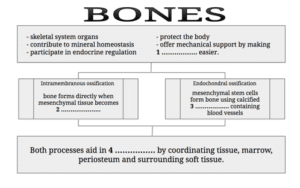¿Te interesa el examen de inglés IELTS? Recuerda que este examen tiene dos versiones, una académica y una general, según los objetivos que persigas. Déjanos contarte, además, que existe un nuevo formato, el IELTS computer based, es decir, aquel que se realiza por ordenador. ¿Lo conocías? Quédate con nosotros para descubrir:
- Las ventajas de realizar el examen IELTS en ordenador
- La modalidad del examen IELTS en ordenador
- Los centros y las fechas disponibles para pasar el IELTS en ordenador en España
- Algunos ejemplos de ejercicios de esta prueba
- Una preparación online con GlobalExam
¡Esto se puso interesante! ¡Acompáñanos!
Ventajas de realizar el examen IELTS en ordenador
Antes de empezar, si quieres saber más sobre ¿Qué es el IELTS? en este artículo te damos más información sobre esto.
Si no conoces el formato IELTS computer based, déjanos decirte que es muy conveniente, sobre todo si necesitas obtener tu certificado rápidamente. A continuación compartimos algunas ventajas de escoger el IELTS en ordenador:
- Hay más fechas disponibles: es mucho más fácil conseguir una fecha de examen disponible para este examen en los diferentes centros examinadores habilitados. Seguramente requiere de menos logística que los demás formatos, por lo que los centros examinadores pueden realizar el examen con mayor frecuencia.
- Los resultados llegan más rápido: cuando pasas el IELTS por ordenador recibes tus resultados en aproximadamente 5 días hábiles, mientras que para el IELTS paper based debes esperar al menos 13 días. Un dato importante si tu deadline se acerca.
- Un formato que ya es familiar: estamos muy acostumbrados a utilizar la computadora para trabajar o estudiar. Esto, quizás, nos juegue a favor ya que no tendremos la impresión de estar realizando un examen clásico y, por lo tanto, nos permitirá estar más cómodos y relajados.
- Practicidad: como en todos los casos, puedes elegir a tu comodidad la fecha y el centro de examen desde la página web, de manera muy sencilla. Una vez inscripto, ¡no tendrás más que empezar a practicar!
¿Cómo se desarrolla el examen IELTS por ordenador?
En el IELTS computer based realizarás desde un ordenador las secciones de Listening, Reading y Writing en uno de los centros examinadores oficiales. El Speaking continúa siendo en persona con un examinador, pudiendo realizarse el mismo día que las demás pruebas o unos días antes o después. En cualquier caso, entre 3 y 7 días hábiles anteriores a la fecha de tu examen escrito, recibirás una notificación con las fechas, hora y lugar de tu examen oral como de los otros componentes del examen.
Por otro lado, todo lo relacionado al examen en sí es lo mismo, tanto en el computer based como en el paper based: contenidos, tipos de preguntas, puntuación, verificación de resultados, etc. Recuerda que ambas versiones tienen exactamente la misma validez y reconocimiento.

¿Cuáles son los centros y las fechas para examinarse al IELTS por ordenador?
Hay varios centros examinadores oficiales en España que proponen el formato de examen por ordenador, tanto para el IELTS Academic como para el IELTS General. Veamos qué disponibilidades hay en las principales ciudades del país:
- En Barcelona, hay en promedio una sesión por semana para el IELTS Academic y entre una y dos sesiones para el IELTS General.
- En Madrid, hay entre dos a cuatro sesiones por semana para el IELTS Academic y dos para el IELTS General.
- En Bilbao y Valencia, tendrás entre dos y tres sesiones por mes tanto para el IELTS Academic como para el General
- En Sevilla, hay en promedio una sesión por mes para ambas versiones del examen.
Existen muchas opciones, ¡no hay excusas para no tomar el IELTS por ordenador!
Si tienes dudas acerca de si tienes que elegir el IELTS Academic o General, no dudes en consultar nuestro artículo sobre el tema. Además si ninguno de los dos te parece apropriado a tus necesidades, informate sobre el IELTS UKVI, quizás el te podrá ayudar.
Ejercicios del IELTS Computer-based
Como ya sabes, las secciones y los tipos de ejercicios del IELTS en ordenador son iguales que los de la versión en papel, solo difiere el soporte que se utiliza. De cualquier manera, si deseas pasar el IELTS en ordenador, te puede resultar muy útil entrenarte en línea para que llegues al día del examen con mucha más confianza.
Tienes muchos tipos de ejercicios a tu disposición para que practiques tus competencias en inglés. Lo más recomendable es entrenarte con exámenes reales, es decir que contengan los mismos tipos de ejercicios que la prueba real. A continuación, te daremos algunos ejemplos de ejercicios reales que podrás encontrar en nuestra plataforma online GlobalExam:
Ejercicio de comprensión lectora – IELTS Academic
En esta sección deberás leer diferentes textos y responder varias preguntas. En el siguiente ejercicio, debes completar el gráfico a partir del texto. No debes escoger más de dos palabras para cada pregunta.
Bone Tissue Engineering with Human Stem Cells
A Bones are organs of the skeletal system, providing shape, mechanical support and protection to the body, and facilitating movement. In addition, bones contribute to the mineral homeostasis of the body and have recently been found to participate in endocrine regulation of energy metabolism. During development, bones form by two distinct processes: intramembranous and endochondral ossification. In intramembranous ossification, cells of the condensed mesenchymal tissue differentiate into osteoblasts and directly form bone. In contrast, endochondral ossification involves the formation of cartilaginous anlage, which then undergoes calcification and invasion by blood vessels, resulting in the formation of new bone by mesenchymal stem cells.
B Adult bones are supplied by blood and constantly undergo remodeling, which allows adaptation to mechanical stresses, maintenance of bone health, and repair of small injuries. A recent study demonstrated very elegantly that the coupling between osteoclastic bone resorption and osteoblastic bone formation is needed to maintain bone health, and that both processes are mediated by tumor growth factor-β. Similarly, coordinated responses of bone tissue, bone marrow, periosteum, and surrounding soft tissues are needed for bone repair, which involves elements of both processes of ossification. A tight control of the balance between bone formation and resorption determines normal turnover of bone tissue throughout the lifetime.
C Frequently, clinical situations arise where extensive injury, congenital malformations, or diseases cause large bone defects, and reconstruction with tissue grafting is needed. Autologous grafts contain the essential components of bone regeneration–osteogenic cells, osteoinductive growth factors, and bone-supporting matrix–but are not readily available in every situation. Other limitations include morbidity at the donor site (which often heals more slowly than the repair site) and difficulties in preparing anatomically shaped grafts from the harvested bone. Alternatives, including allogeneic bone transplantation, have their own limitations, such as tissue matching, disease transmission, batch variability, and an inability to survive and integrate following implantation. Additionally, the large variability in bone defects, the huge complexity of bone architecture, and the high metabolic activity of bone, necessitating immediate blood supply, motivate the development of new treatment strategies.
D Current models of bone formation in vitro are based on the paradigm that cellular differentiation and function can be modulated by the same factors known to play a role during embryonic development. In order to engineer an environment supporting bone formation, combinations of biochemical and biophysical signals need to be presented to the cells in a three-dimensional setting in a way that allows cellular interactions with the surrounding cells and extracellular matrix. The complexity of signaling – with temporal and spatial gradients of molecular and physical factors affecting bone morphogenesis – presents significant challenges to engineering fully viable, functional bone.
E One key component of the in vitro bone model is the porous scaffold, which provides a structural and logistic template for the developing tissue, and can markedly affect cell behavior. Several types of porous scaffolds have been shown to support in vitro bone formation by human cells, including those made of ceramics, native and synthetic polymers and composite materials. Scaffold properties important for bone formation include: the size, distribution and shape of the pores; surface roughness; the presence of cell attachment sites; and the biomechanics of both the material and the scaffold structure. In general, the most suitable scaffolds for bone formation are those with large and interconnected pores (which facilitate cell infiltration and matrix deposition) and rough inner surfaces (which facilitate cell attachment), made of osteoconductive materials (such as bone protein and hydroxyapatite), and with mechanical properties similar to those of native bone (both to enable load-bearing and stimulate osteogenesis). Scaffolds can also incorporate and modulate delivery of molecular signals controlling cellular functions
F Another key component of bone tissue engineering is the culture system or bioreactor. Bioreactor systems can be designed to control transport of nutrients and oxygen to cells in clinically sized constructs and provide lineage-specific biological stimuli in various regions of the graft. Additionally, the development of functional, load-bearing characteristics of the graft would be enhanced by the application of biophysical stimulation in order to attain mechanical competence in both the cartilage and bone regions.

Ejercicio de expresión escrita – IELTS Academic
Este ejercicio corresponde a la Tarea 2 del Writing, en la que debes escribir un texto de al menos 250 palabras. Te presentarán una temática como la siguiente y luego te darán una consigna sobre la que deberás escribir tu texto.
Write about the following topic:
In many countries, laws are passed by politicians and elected officials. Individual citizens elect their leaders but they do not vote on laws directly.
Law-making would be improved if more decisions were made by referendum. In other words, important issues should be decided by individual voters and not by politicians.
Do you agree or disagree? Support your position and provide examples.
Prepárate en línea al examen IELTS con GlobalExam
¿Crees que necesitas tomar un curso de inglés online para alcanzar el nivel que deseas en el IELTS computer based? Si es así, sigue con nosotros, queremos presentarte nuestra plataforma GlobalExam, donde podrás entrenarte para el IELTS de forma eficaz y sencilla. Nuestro entrenamiento ha sido ideado por lingüistas reconocidos y tiene como objetivo permitirte practicar en condiciones reales gracias a sus ejercicios y simulacros de examen
En ella encontrarás todo lo que necesitas para que certificar tu nivel de inglés no sea para nada complicado:
- Exámenes modelo y simulacros de examen
- Ejercicios para cada parte del examen, con sus respectivas correcciones
- Hojas de revisión
- Estadísticas para que identifiques los aspectos que puedes mejorar
- Herramientas para que planifiques tu estudio, etc.
¡No esperes más y entrénate con GlobalExam! Realizar tus objetivos está mucho más cerca de lo que crees, ¡vamos!



